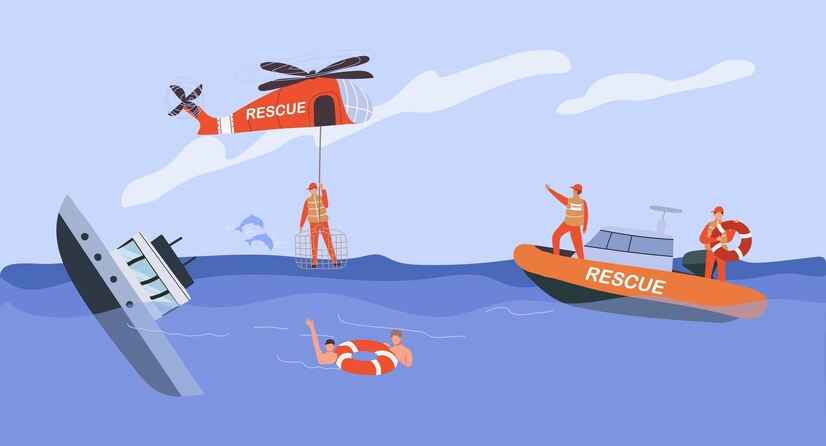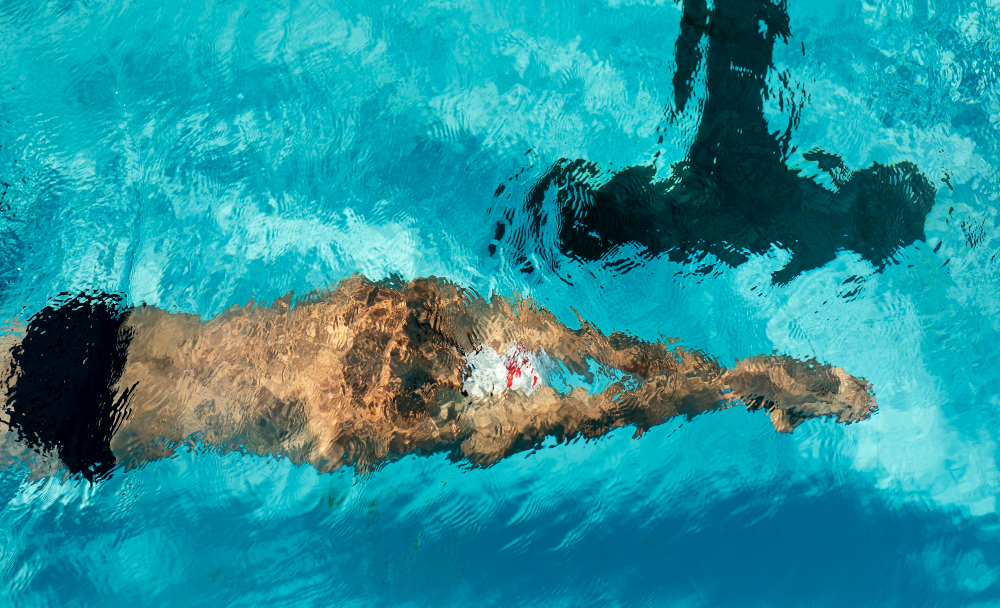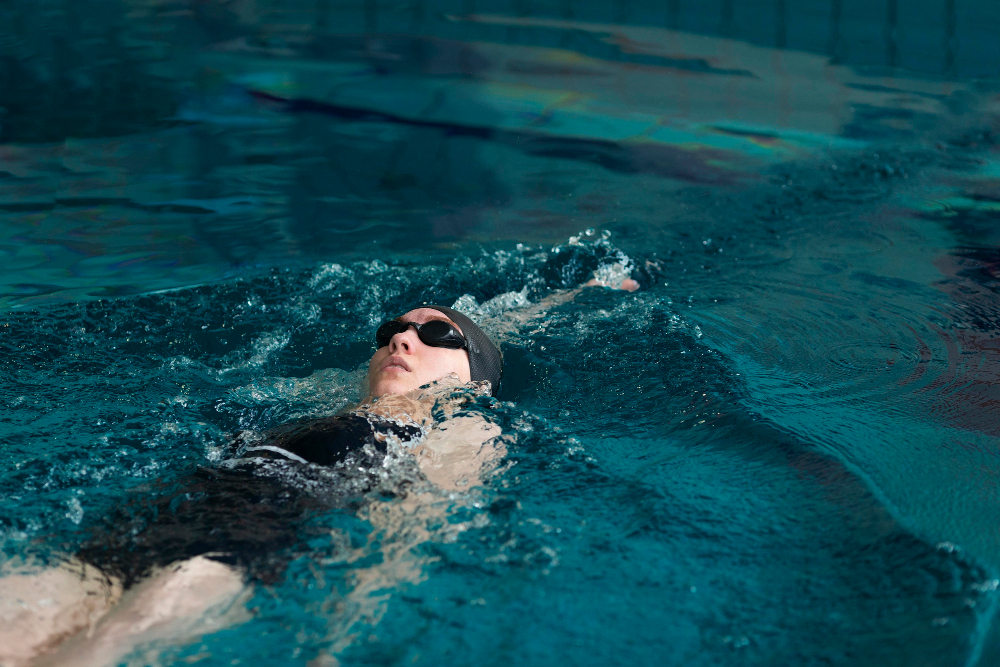AI water rescue systems are playing a bigger role than ever in making swimming safer. While human supervision can be limited by tiredness or distractions, machine learning in drowning prevention offers constant, data-based monitoring. By spotting complex patterns in movement, posture, and biometrics, AI can detect signs of distress much sooner than traditional methods. Devices like Swim Sense use smart algorithms in wearable safety gear to continuously monitor swimmers and predict risks in real time. This isn’t just automation—it’s a helpful boost that allows systems to recognize danger as soon as it happens. In this post, we look at how AI is changing swimmer safety, how autonomous swimmer monitoring works, and what the future holds for AI-powered rescue tools. When it comes to drowning, every second matters, and smart systems are making those seconds count.
The Rise of AI in Aquatic Environments
AI’s entrance into aquatic safety has revolutionized the way we monitor swimmers. Unlike static sensors or passive lifeguards, AI water rescue systems analyze continuous streams of data—from motion detection to biometrics—to build real-time behavior models. These models adapt dynamically, learning what constitutes normal activity and flagging anomalies such as immobility, erratic movement, or sinking patterns. IEEE Transactions on Cybernetics (2023) emphasizes that AI systems can reduce false positives by over 60% compared to traditional alert setups. Swim Sense, while primarily a wearable, now includes machine-learning-powered alert criteria that evolve with each use. This means faster recognition, fewer missed incidents, and a more precise understanding of when intervention is needed.
Machine Learning and Biometric Interpretation
One of the strongest benefits of machine learning in preventing drowning is its ability to track biometric patterns over time. Instead of just reacting to a sudden heart rate spike or a change in movement, AI systems consider the bigger picture—creating models that predict risk before it happens. For example, a slightly higher heart rate, less arm movement, and dropping oxygen levels might each seem harmless on their own. But together, they could indicate early signs of trouble. Research published in Nature Machine Intelligence (2024) confirms this, showing that machine learning algorithms can improve drowning detection accuracy by 45%. Devices like Swim Sense use these models, moving beyond simple alert rules to smarter, learning-based systems that make better decisions as they gather more data.
Autonomous Monitoring and Constant Vigilance
A key advantage of autonomous swimmer monitoring is its ability to provide 24/7 consistent supervision. Unlike humans, AI systems do not blink, get distracted, or suffer from fatigue, ensuring continuous attention even in crowded environments with hundreds of swimmers. By integrating biometric sensors with AI-driven decision-making, wearables like Swim Sense act as intelligent watchdogs. They analyze environmental factors, swimmer location, movement patterns, and vital signs to detect potential risks within milliseconds. A 2023 study published in Sensors and Actuators B found that autonomous AI safety systems outperformed human lifeguards in detection speed by a factor of five. This technological partnership combines human qualities such as empathy, judgment, and nuanced decision-making with AI’s relentless, rapid monitoring ability. Together, they can enhance safety, providing faster alerts and better risk management, ultimately revolutionizing aquatic safety protocols.
Edge Computing for Faster Responses
Edge computing processes data right on the device instead of sending it to a remote server, and it’s changing how we handle real-time safety in water environments. Quick reactions are essential, especially for water rescue and preventing drownings. For AI water rescue systems, this makes a big difference. Devices like Swim Sense have edge-processing chips built into the wearable, so they can analyze biometric data like heart rate and body temperature instantly, right on the wristband. This means alerts, risk assessments, and rescue actions happen immediately, without needing internet or cloud processing. A 2023 study in ACM Computing Surveys showed that edge AI can speed up emergency response times in water safety by as much as 80%. Faster detection and quick reactions are crucial when every second matters in drowning prevention. By putting the processing power in the device itself, edge computing helps ensure timely help, greatly improving swimmer safety and lowering the chance of serious accidents.
The Future of Smart Aquatic Ecosystems
As cities adopt smart technologies, the aquatic sector is evolving into connected, intelligent environments designed for enhanced safety. In the near future, pools and beaches will integrate multiple technologies—wearables like Swim Sense, underwater cameras, drone surveillance, and AI water rescue systems—into seamless, unified networks. These interconnected systems will share data in real-time, creating comprehensive safety ecosystems that provide multiple layers of machine-assisted monitoring and protection for every swimmer. Swim Sense will play a crucial role by supplying precise individual biometric data that feeds into these wider networks, improving incident detection and response. Advances in cloud-AI collaboration and predictive analytics will enable these systems to anticipate risks before they escalate. This emerging technology promises to drastically reduce drowning incidents, moving us toward a future where drowning is not only rare but virtually eliminated, making aquatic environments safer for swimmers of all ages and abilities.
Conclusion
The union of artificial intelligence and biometric sensing is reshaping what water safety means. No longer passive or reactive, today’s systems are proactive, predictive, and personalized. Machine learning in drowning prevention has transformed isolated wearables into responsive guardians. Autonomous swimmer monitoring ensures every swimmer is accounted for, every signal analyzed. And Swim Sense, with its AI-powered biometric triggers and edge computing architecture, represents the cutting edge of this evolution. We’re entering an era where AI not only complements human effort but surpasses it in speed and reliability. Safety no longer depends solely on watchful eyes—it depends on intelligent systems that never sleep. The path forward is clear, and it’s powered by data, algorithms, and life-saving decisions made in real time.




